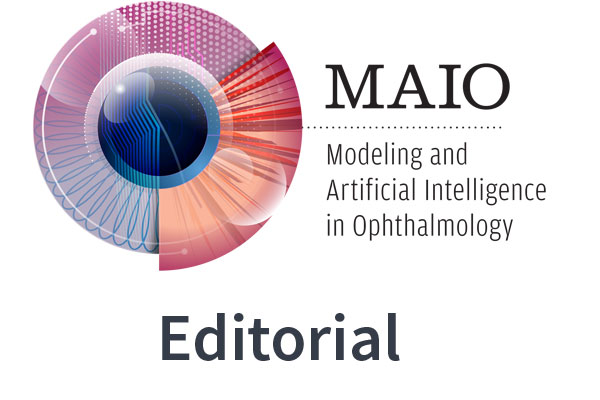Keywords
References
Abràmoff MD, Lavin PT, Birch M, Shah N, Folk JC. Pivotal trial of an autonomous AI-based diagnostic system for detection of diabetic retinopathy in primary care offices. NPJ Digit Med. 2018 Aug 28;1:39. https://doi.org/10.1038/s41746-018-0040-6
Bhaskaranand M, Ramachandra C, Bhat S, Cuadros J, Nittala MG, Sadda SR, Solanki K. The Value of Automated Diabetic Retinopathy Screening with the EyeArt System: A Study of More Than 100,000 Consecutive Encounters from People with Diabetes. Diabetes Technol Ther. 2019 Nov;21(11):635-643. Epub 2019 Aug 7. https://doi.org/10.1089/dia.2019.0164
Yao X, Alam MN, Le D, Toslak D. Quantitative optical coherence tomography angiography: A review. Exp Biol Med (Maywood). 2020 Feb;245(4):301-312. Epub 2020 Jan 20. https://doi.org/10.1177/1535370219899893
Poplin R, Varadarajan AV, Blumer K, Liu Y, McConnell MV, Corrado GS, Peng L, Webster DR. Prediction of cardiovascular risk factors from retinal fundus photographs via deep learning. Nat Biomed Eng. 2018 Mar;2(3):158-164. Epub 2018 Feb 19. https://doi.org/10.1038/s41551-018-0195-0
Munk MR, Kurmann T, Márquez-Neila P, Zinkernagel MS, Wolf S, Sznitman R. Assessment of patient specific information in the wild on fundus photography and optical coherence tomography. Sci Rep. 2021 Apr 21;11(1):8621. https://doi.org/10.1038/s41598-021-86577-5
Campbell JP, Mathenge C, Cherwek H, Balaskas K, Pasquale LR, Keane PA, Chiang MF; American Academy of Ophthalmology Task Force on Artificial Intelligence. Artificial Intelligence to Reduce Ocular Health Disparities: Moving From Concept to Implementation. Transl Vis Sci Technol. 2021 Mar 1;10(3):19. https://doi.org/10.1167/tvst.10.3.19
Medeiros FA, Jammal AA, Thompson AC. From Machine to Machine: An OCT-Trained Deep Learning Algorithm for Objective Quantification of Glaucomatous Damage in Fundus Photographs. Ophthalmology. 2019 Apr;126(4):513-521. https://doi.org/10.1016/j.ophtha.2018.12.033
Faes L, Wagner SK, Fu DJ, Liu X, Korot E, Ledsam JR, Back T, Chopra R, Pontikos N, Kern C, Moraes G, Schmid MK, Sim D, Balaskas K, Bachmann LM, Denniston AK, Keane PA. Automated deep learning design for medical image classification by health-care professionals with no coding experience: a feasibility study. Lancet Digit Health. 2019 Sep;1(5):e232-e242. Epub 2019 Sep 5. https://doi.org/10.1016/S2589-7500(19)30108-6

